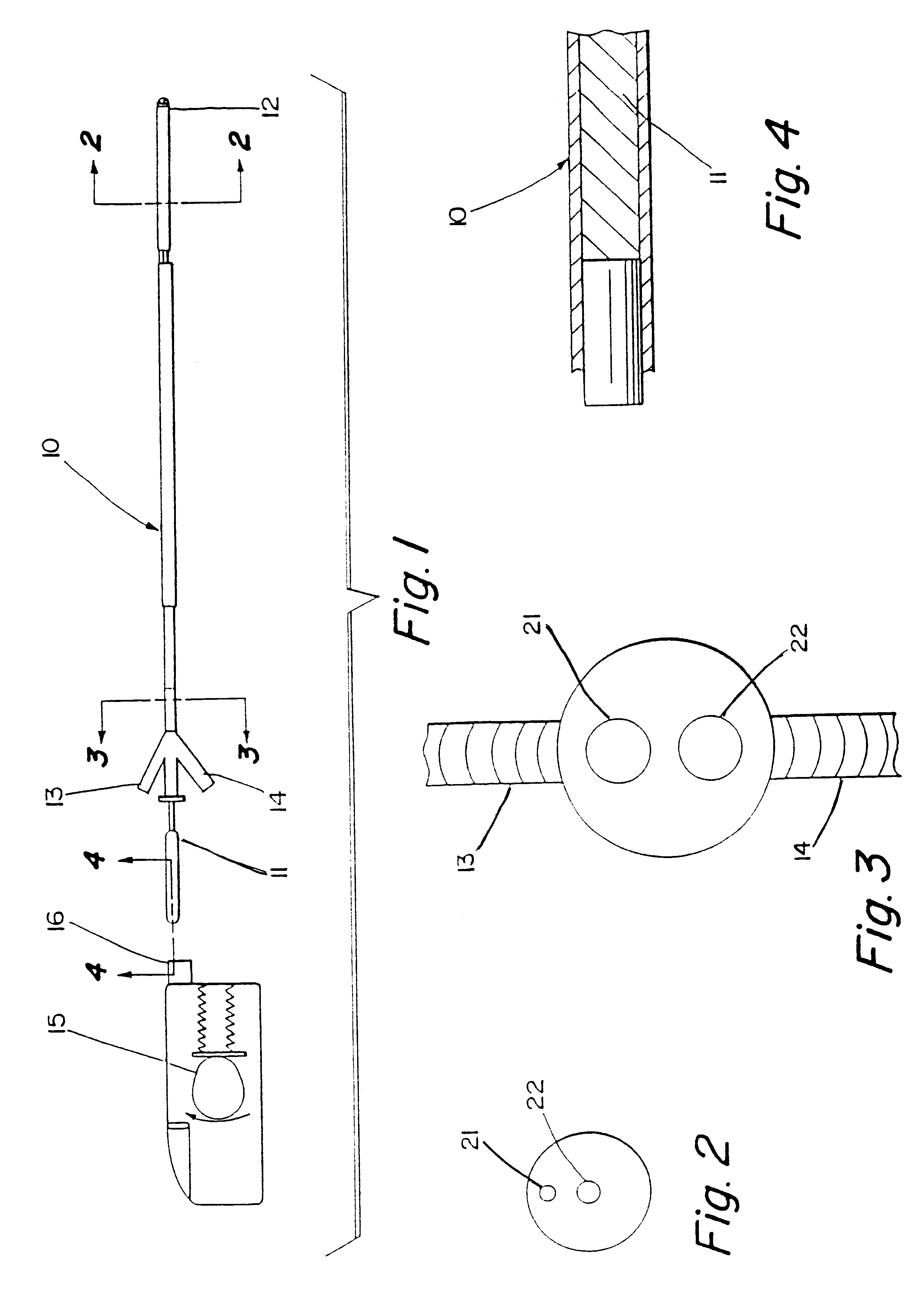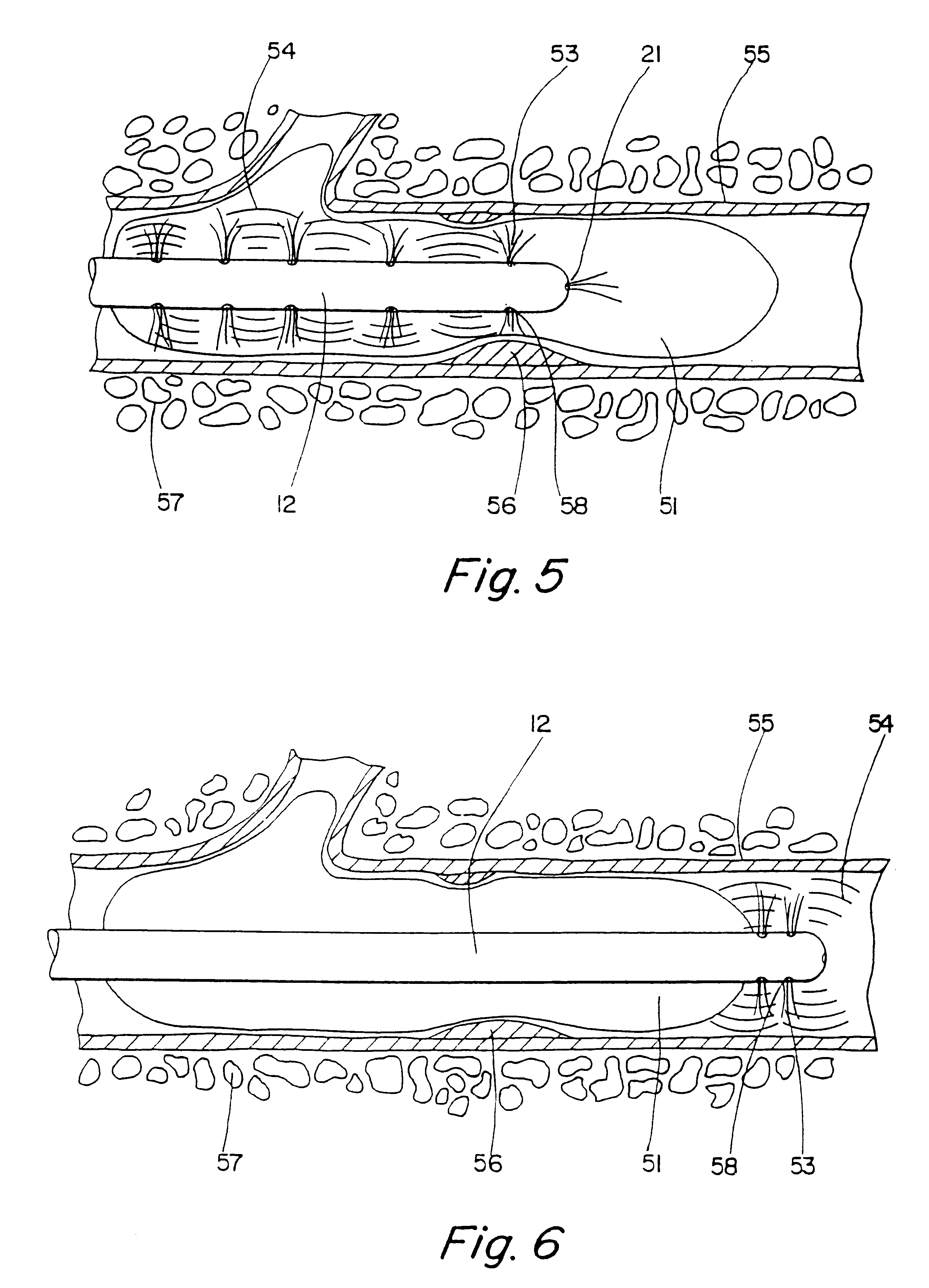Thrombolysis device
a thrombolysis device and a technology for blood vessels, applied in the field of thrombolysis devices, can solve the problems of thrombosis, life-threatening thrombosis, and inability to remove thrombosis, and none of the thrombosis removal methods are particularly adapted to the task of removing thrombosis
- Summary
- Abstract
- Description
- Claims
- Application Information
AI Technical Summary
Benefits of technology
Problems solved by technology
Method used
Image
Examples
example
To prove evaluate the effectiveness of the present invention, an in vitro experiment was performed to evaluate the advantage, if any, of using the motion catheter to disperse clots rather than existing technology. Blood clots were created in a test tube. The weight of each clot was measured prior to experimentation. The clots were then treated with urokinase at a rate of 5000 IU / mI for 5 minutes to a total of 15,000 IU. The clot (thrombus) weights were measured initially and finally to determine the amount of lysing that had taken place. One of the groups (Group 1) was used as a control. Nothing was done to the Group 1 thrombi except initial and final weighing. Another group (Group 2) was treated with the same amount of lysing agent, but the lysing agent was dispersed through the motion catheter while the catheter was being very slowly vibrated, the catheter was placed proximal to the clot in similar fashion as was the aforementioned group. In Group 3, the motion catheter was placed...
third embodiment
With respect to FIG. 15, there is shown the aspiration device 100 in accordance with this invention. In the aspiration device of FIG. 15, the outer sleeve 104 includes an occluding mechanism 116 which prevents blood from preceding around the occluding mechanism 116 and causes blood flow to enter the proximal end of the outer sleeve 104. Similar to the previously discussed embodiments of FIGS. 13 and 14, the occluding mechanism 116 operates to force blood flow to an area where an in-line polymeric filter or filter cartridge may trap the particulate matter 106, thereby removing it from the blood vessel and consequently the blood stream.
It will be appreciated that a variety of other filters not described herein may be used. For example, the filters may comprise a variety of different shapes and sizes and may be located in slightly different positions on the catheter.
The occluding mechanism 116 comprises an exemplary embodiment, an angioplasty type balloon which is selectively inflated ...
PUM
 Login to View More
Login to View More Abstract
Description
Claims
Application Information
 Login to View More
Login to View More - R&D
- Intellectual Property
- Life Sciences
- Materials
- Tech Scout
- Unparalleled Data Quality
- Higher Quality Content
- 60% Fewer Hallucinations
Browse by: Latest US Patents, China's latest patents, Technical Efficacy Thesaurus, Application Domain, Technology Topic, Popular Technical Reports.
© 2025 PatSnap. All rights reserved.Legal|Privacy policy|Modern Slavery Act Transparency Statement|Sitemap|About US| Contact US: help@patsnap.com



